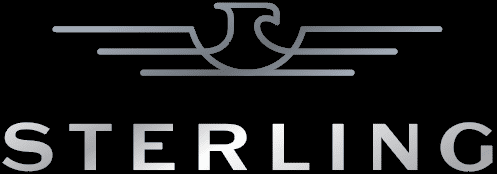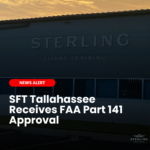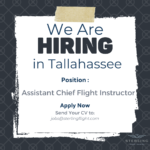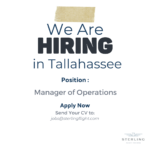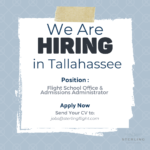Have planes always fascinated you? Maybe you get excited every time you take a commercial flight or are feeling restless in your 9-5 job. With the high demand for professional pilots only growing, it’s the perfect time to spread your wings and fly into a new career opportunity.
We understand you may feel there are barriers to fulfilling this dream; family, financial commitments, current career obligations. It’s not too late to begin pursuing your dream though, and Sterling is here to support you every step of the way.
Where to start
Deciding to change careers is a big commitment and one you should thoroughly research before making a final decision. Here are a few things to do before beginning training.
- Determine your skillset: According to NASA’s Langley Research Center, there are five main personality traits that make a good pilot. Other qualifications include a passion for flying, spatial awareness, aptitude for numerical and data analysis, strong attention to detail and problem-solving skills.
- Choose the best program for your needs: There are many pathways to become a professional pilot. You can choose to do just your flight training, preferably under Part 141, or you can opt to get a university degree in conjunction with your training through one of our partners. Other options are accelerated training or Part 61 training. Our admissions staff can walk you through the best options to fit your needs.
- Plan out your timeline and schedule: At a minimum it will take 2-3 years to reach the airlines from zero flight experience. The first step is to begin your private pilot certificate and then progress to Instrument Rating, Commercial Pilot, Multi-Engine and Certified Flight Instructor. At Sterling, all training is one-on-one, and our in-house programs have rolling enrollment, so we are extremely flexible on when you want to train.
- Build hours: After completing your certificates and ratings, the next step is to continue flying to build your flight hours. Airlines require pilots to have 1500 hours, or anywhere from 1000-1250 if your training program is approved for restricted ATP. The good news is, most of these hours can be achieved during your time as a flight instructor which means you get paid to instruct students and build your own hours as well.
Why it’s the best time to become a pilot
The mandatory retirement age for professional pilots is 65. This age restriction combined with an increase in travel demands and a reduction in students entering the career field, has created a pilot shortage long in the making. The effects of furloughs and forced retirements during COVID-19 have added to the issue, causing an immediate demand of more than 21,000 pilots in 2021 and more than 800,000 pilots over the next two decades.
In addition to the excitement of no two days being the same, travel rewards and a desirable work schedule, it’s no secret the pay is great too. When compared to doctors and lawyers, pilots make comparable pay and require less time in training. For every dollar spent toward training, most pilots earn an average $33 return on investment.
How to fund your training
The cost of training is very dependent on your individual ability and performance. Most schools will be able to provide you with what the minimum cost to train is based on FAA requirements or student averages. However, your cost could be higher if there are certain stages you need additional training on.
- Financing Partners: If you are enrolling in our in-house programs, we have partnered with private financial institutions to assist you in funding some or all your training.
- Pay-as-you-go: We offer students the option to deposit funds into a pre-pay account or to pay for lessons as completed by cash, check or card.
- Financial Aid: Students enrolled through a university partner have expanded financing options available to them. We encourage students to contact and work with the university financial aid department to identify Title IV funding, scholarships and grants available.
- Veteran/GI Bill Benefits: Qualifying students pursuing a commercial pilots license can be eligible for VA benefits. Students training through a Sterling in-house program will be eligible for reimbursement of training costs up to a certain amount per year. University programs offer extended benefit opportunities for veterans by paying for the net cost of tuition up to a certain amount per year plus a housing allowance and books/supplies (depending on your level of eligibility and entitlement). Please note: VA benefits cannot be used toward private pilot training.
- Flight Training Scholarships: There are a number of organizations across the country that offer aviation-related grants and scholarships. Visit FAA.Gov/education for a complete list.
If you re in need of flexible, high-quality training at a flight school you can trust, then contact Sterling Flight Training today to talk to someone about starting your career pathway.
